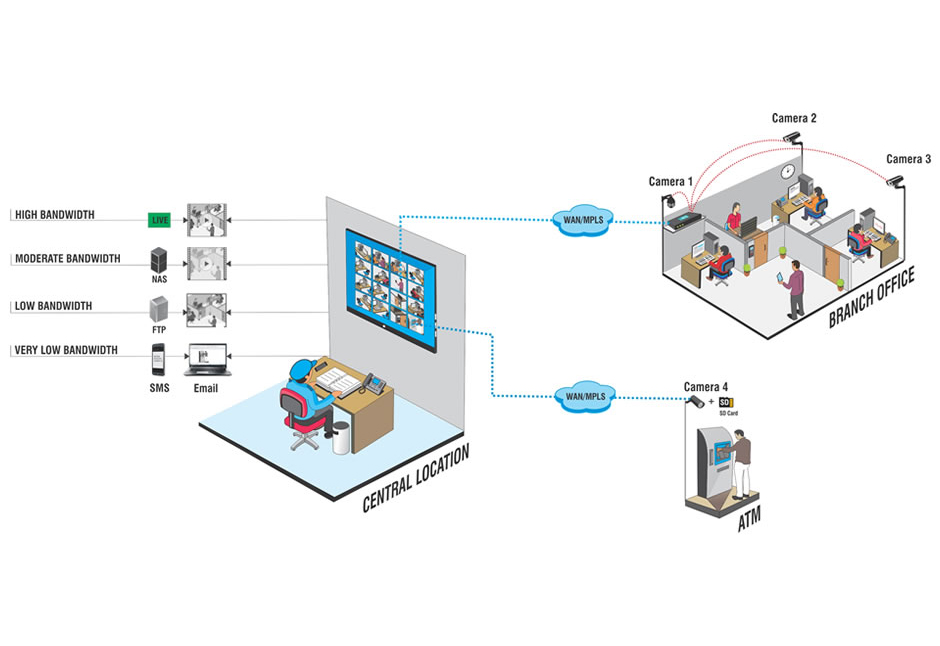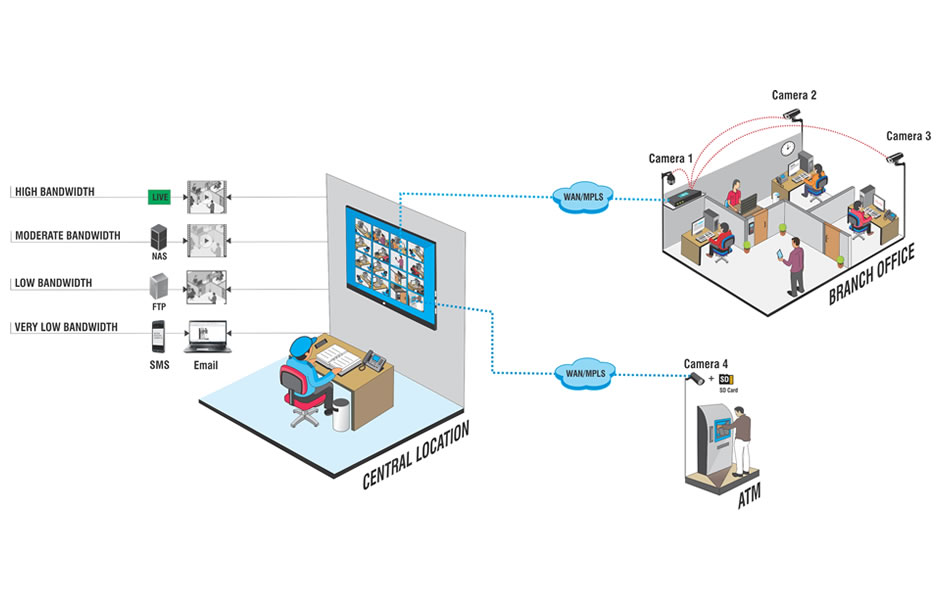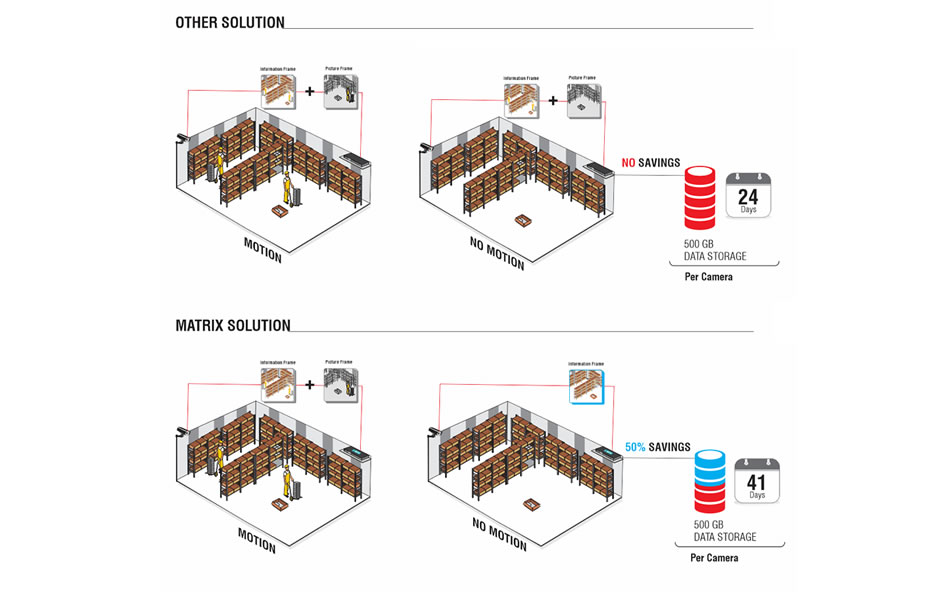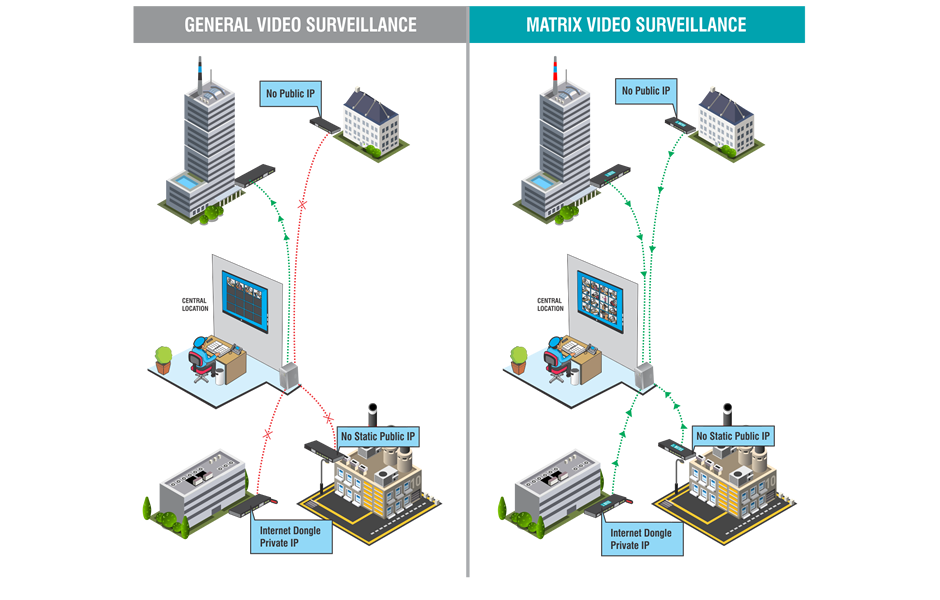
Security threats are growing day by day and so is the video surveillance industry. With advancement of technology, the quality of cameras has seen a drastic improvement in the last five years. With each passing day, companies are coming up with higher resolution cameras, so much so that 12K cameras are now available in the market.
Even the customers, who are in a way ‘spoilt’ by smartphone makers that offer up to 40MP resolution, now find low resolution cameras below par. In the entire process, the most important aspect that determines your image quality in centralized monitoring is often ignored. And that aspect is bandwidth.
The two major issues with bandwidth are its availability and cost. These issues become more prominent in developing countries, where bandwidth availability is always a hurdle, especially when it comes to centralized monitoring of multiple locations. The second point that people tend to overlook while buying video surveillance is recurring cost of bandwidth. Out of all the costs involved in video surveillance, bandwidth is the only cost that is a recurring cost, and over a period of time, will become the highest contributor to the overall cost.
Especially, when the installation is for multiple locations, the cost of public and static IP is also significant. Installing high resolution cameras and at the same time overlooking bandwidth will not do justice to your investments. Does that mean you should give up your desire to install high resolution camera at your enterprise? Absolutely not! This blog intends to help you select your video surveillance solution, such that you can centrally monitor your high resolution cameras without compromising image quality.
- Record at Local Location, Monitor Playback from Central Location
Bringing all the streams to central location when you’re not actually monitoring all of them at the same time is simply wastage of bandwidth. At any given point of time, you would be monitoring only a few of them. In this case, the sensible thing to do would be record at the local location and monitor and playback from the central location. So streams will come only for the cameras that are being monitored. And in case you are very particular about security and want backup, then you can opt for event based recording at the central location. Based on the availability of bandwidth, you can opt for four different options:- High Bandwidth: Pre and Post Event based Recording
- Moderate Bandwidth: Audio and Alarm Notification with Live Video at Central Location
- Very Low Bandwidth: SMS and Email Attachment with Snapshot

- Adaptive Streaming
For a layman, watching a video is all about smooth movements. But in reality, it’s not so smooth. A video is just a series of pictures flipped at a very high speed, usually 25 frames per second. So your camera generates 25 frames per second for you to see a smooth video. Now imagine a non-activity period, for e.g. office premises after working hours, when there’s no change in scene but still your camera captures 25 frames per second. This results in criminal wastage of bandwidth and storage. You need smart cameras that automatically lower the frame rate during no activity period. This can save up to 50% of your bandwidth and eventually, storage without any compromise in image quality or lowering the resolution.
- Elimination of Public IP and Static IP
For centralized monitoring, most of the video surveillance systems present in the market asks you to purchase public and/or static IP for each location, which increases the cost of solution manifolds. To talk in layman language, static IP is like a permanent contact number required for communication. In such a system of communication, the central location initiates connectivity to the remote locations. Now, see this in terms of one person trying to connect multiple people across various geographies. This requires a permanent contact number for people. But if we reverse the process, if multiple people across various geographies try to connect to that one person at the central location, then only one permanent contact number is required, with the person at the central location. A Video surveillance system with such an architecture will save huge sums on public and static IP.

